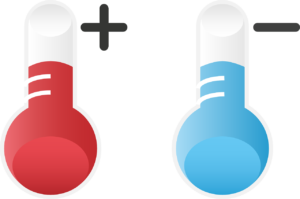January 14, 2020
What is comfortable air?

The awareness around a healthy and comfortable indoor climate is increasing. In this article we will look into what defines “comfortable air” and how we can accomplice it.
Comfortable air can be defined as the optimal indoor air environment where the thermal comfort for people is reached. This is thanks to indoor parameters such as heat, ventilation, isolation, etc. as well as personal parameters (clothing, metabolic activity, etc.).
As the personal parameters depend highly on personal preference and personalities, the easiest parameter to control is the indoor parameter.

There are 4 elements in the indoor parameters that need to be considered for a comfortable air condition:
- Temperature: how warm or cool is the indoor air;
- Humidity: how much moisture is present in the air;
- Cleanliness (air contamination): how clean is the air in a room by removing dust and dirt particles;
- Airflow distribution: how is the circulation of air in a room and how often is the air renewed.
By adapting these 4 elements – “temperature“, “humidity“, “cleanliness” and “airflow” – you can adjust the room to a comfortable environment.
Comfort zone and discomfort index
The purpose of creating an indoor air environment is to prevent the “discomfort index” to rise and have a negative impact on the well-being. As an example, in a hospital it is important to keep the discomfort index as low as possible. The well-being of a patient will highly influence the healing process. Therefore, the hospital needs to control the temperature level for comfort. In addition, they need to adjust the ventilation rate for air circulation to prevent bad smell and bacteria to remain stuck in an hermetic room.
The “discomfort Index” shows how much discomfort people feel. It indicates the relationship between the temperature and the relative humidity as a certain index. The larger this index is, the more people feel discomfort.
In order to feel comfortable, there must be a balance between the temperature and the humidity.
Even if the thermal sensation of a person varies depending on age, gender and season, a person’s sense of temperature is affected not only by the actual temperature, but also by the humidity and airflow conditions. In order to reach the comfort zone, you need to create balance between the temperature and the humidity.
For example, during warms days when cooling devices, like a ventilator, are used. If the humidity is low, the air is still perceived as comfortable even if the temperature is high. However, if the relative humidity is too low, the nose and throat will be too dry and uncomfortable, as we often experience on winter days. Considering this, the comfortable range of both temperature and relative humidity is limited.
Although there are differences between individuals and activities, in general, people feel comfortable when the conditions are as follows:
- Temperature: 18 ~ 24℃
- Relative humidity: 40 ~ 70%
This is called the comfort zone.

Comfortable air for industrial applications
The purpose of reaching a comfortable air condition for industrial use is to create an optimal indoor air environment. This is vital for quality control and production efficiency, including capacity and storage. Adjusting the right conditions with the 4 elements mentioned above is key for quality management.
However, every industry has different conditions to reach in order to ensure a good quality product and a good working environment. We’ve covered some examples from various industries in a previous article: What is the needed humidity level per industry?
When adjusting all factors to create a comfortable air environment, you need to remember that the temperature has a direct influence on the humidity level. You also need to take into consideration the building and the existing HVAC system.
To learn more how the temperature, the building and the HVAC system influence the humidity level, have a look to our previous article: What influence the level of humidity?

Why creating an environment with comfortable air is important?
Whether it’s an office, a hospital, a store or a factory, it is important to control the air conditions to maintain the comfort zone. For both the workers and the goods, the right balance between temperature and humidity is important to ensure good quality and efficiency.
Although it is easy to see the consequence of a wrong temperature level (e.g. too warm temperature in a storage of fresh food will deteriorate the quality of the goods), knowing the direct consequence of a low humidity level is less obvious.
We have covered in previous articles the impact of a low humidity level on some production processes, on the workers’ health and on a business level:
- How much impact can a lower humidity level have?
- Health benefits of the right humidity level for indoor environments
At Ikeuchi, we can help you to assess the comfortable air conditions for your factory in order to improve your productivity. Don’t hesitate to contact us!
